Introduction
Undoubtedly, you have heard of hornwort. After all, it is one of the most common aquarium plants used as decoration across the globe. It has fantastic qualities which make it ideal as part of an aquarium’s décor.
Hornwort is a common aquarium plant that is often confused with another popular aquarium plant, Elodea. Hornwort and Elodea are both aquatic plants that have long, stringy leaves that grow on the surface of the water.
The difference between the two plants is that hornwort has a yellowish hue to its leaves while elodea has a greener hue.
This article will go over some basic information about hornworts including how they look, what conditions they require for optimal growth, solutions to a few common problems and more!
Ceratophyllum Demersum – Hornwort Basics
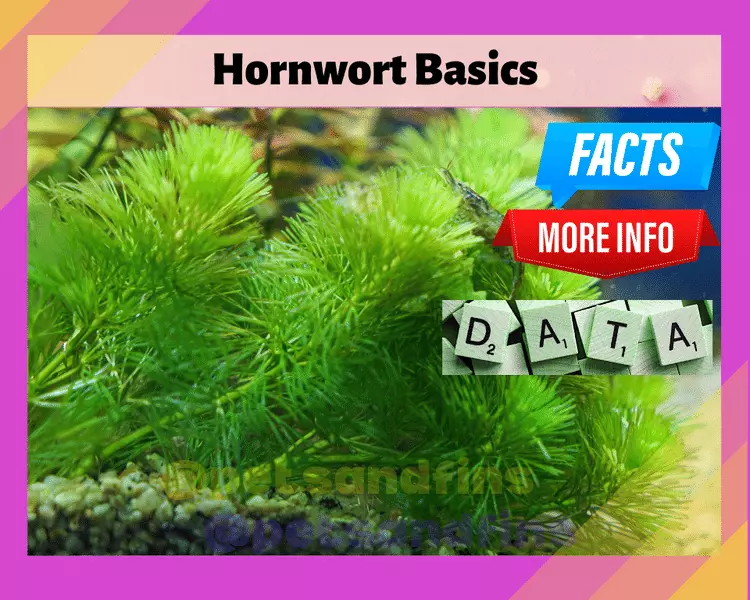
Hornworts have been classified and known as Ceratophyllum demersum. These category of plants lack roots. Hornwort is a plant that is easy to care for and can be used by beginners or experts alike.
It’s also good for planted tanks as well as fish and shrimp tanks, snail tanks, ponds and more. Because it survives in all parts of the world except Antarctica, it is used across the world.
However, in the case of New Zealand, it was ‘introduced’ and now Hornwort is treated as an invasive plant. Nevertheless, Hornwort is still popular because it can be used both in outdoor ponds or indoor aquariums.
Other Names Of Hornwort
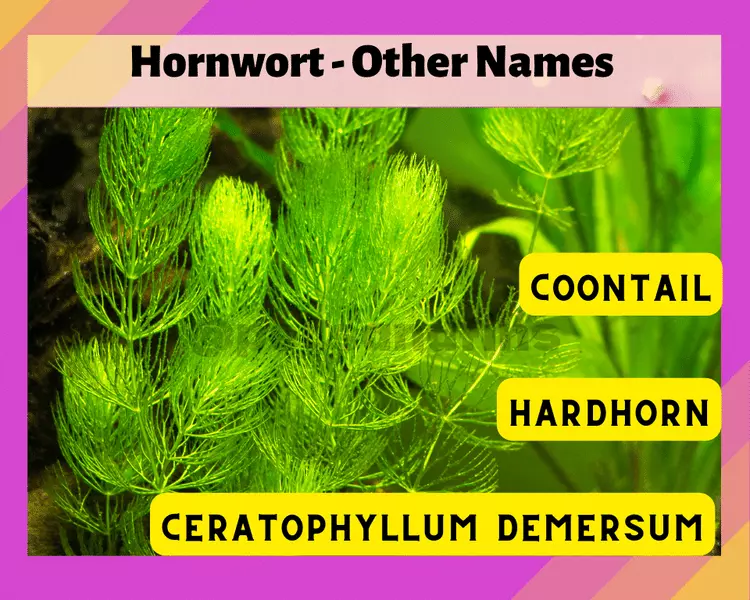
You may have noticed that there are multiple names for this plant floating around. While most people know the word “hornwort,” there are other terms you can use as well.
There are also some alternate names to describe this plant in different ways: coontail and hardhorn are just two of them! In English, it’s known as hornwort, hornwort moss and European filamentous pondweed.
Another thing you should know is ‘Hornwart’ with an a is a wrong spelling—it should be spelled with an o: hornwort.
The Body Of The Hornwort
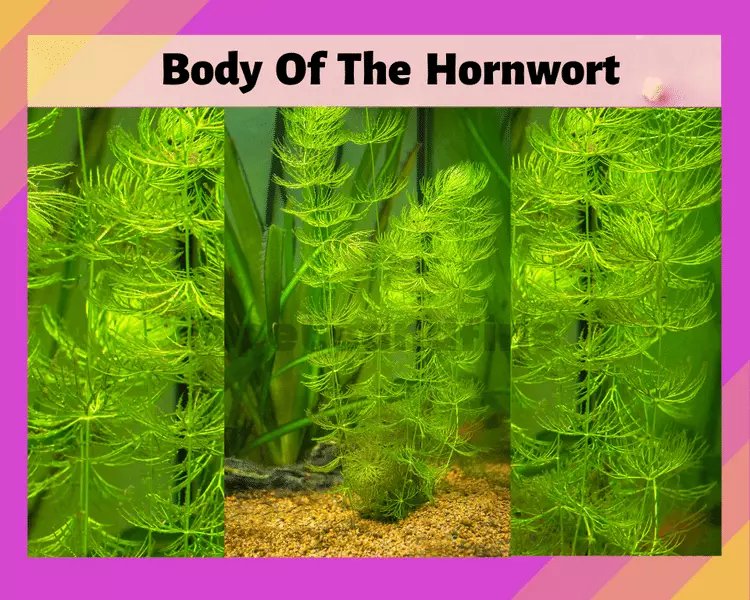
The stem is green and stems from the base of the plant.
The leaves are bright green, long, and pointed at the end. They are very similar to a pine tree’s needles.
As you can see here in this picture, it has a very tall body with lots of leaves that stick out from it like pine needles sticking out from a pine tree. This makes for an interesting texture on your aquarium floor as well as being aesthetically pleasing!
It also makes them a bad choice for being edible by snails or fish because they have such sharp edges that they could hurt their mouths if they tried to eat them.
Hornwort – Growth
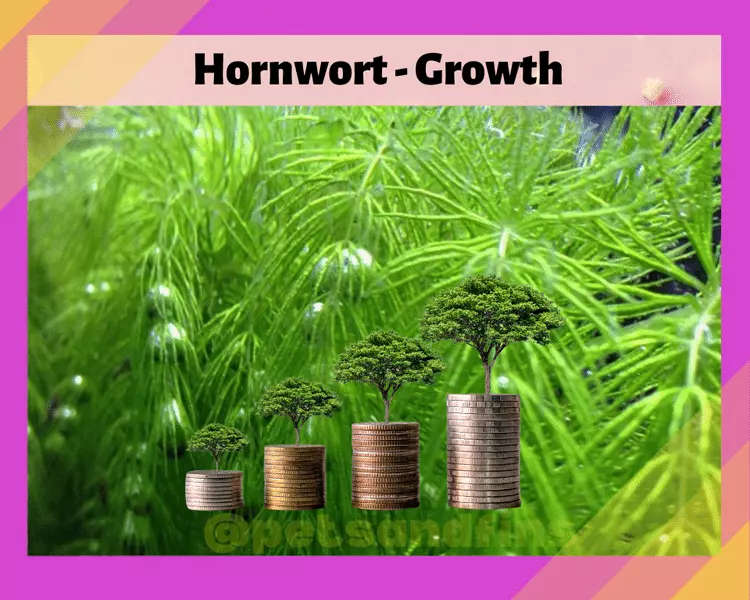
In a week, it can grow up to 4 inches. In a month, it can grow up to 12 feet tall. In the wild, it can grow even longer than that! This plant is not very expensive, and it’s easy to care for—just give it water, light, and nutrients and it’ll thrive.
These are just a few reasons why you should consider adding this plant to your home décor. Hornwort is a great plant for beginners. It’s easy to care for, grows quickly in the right conditions, and can be grown indoors or outdoors.
Hornwort – Height

Hornwort is a fast-growing plant that can grow up to 12 feet tall. It grows at a rate of 3 – 4 inches per week, and does not need CO2 to flourish. However, if provided with CO2, hornwort will do better than without it!
This means that you need to keep it contained in your tank by regular trimming or it will take over the entire tank. Hornwort is a floating plant that spreads quickly and can cover your entire surface in no time. This sounds great at first glance, but there are two reasons why this isn’t what you want:
1) The algae that grows on the leaves of hornwort can be harmful to your fish, so you’ll need to clean it off regularly.
2) It can block the air and light flow which can be very harmful.
Hornwort – Benefits

The benefits of hornwort are many, including:
Hornwort – Suitability
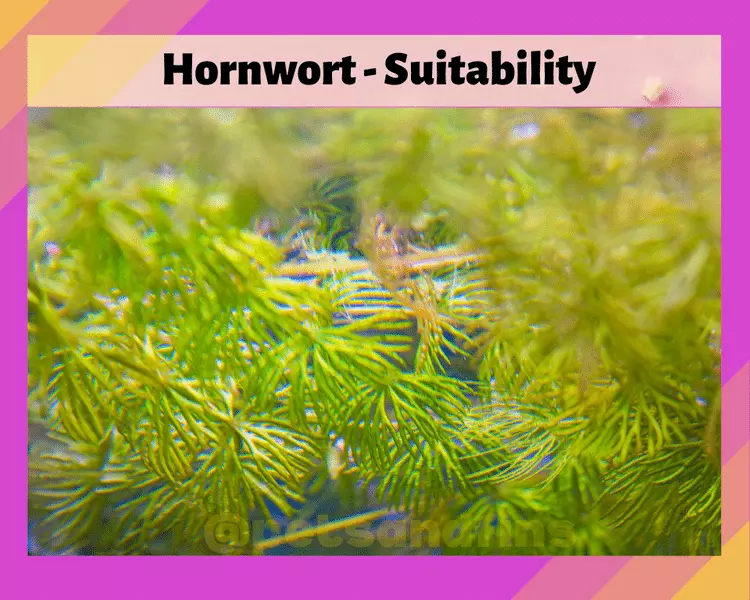
Hornwort is an excellent plant for ponds or aquariums with fish and plants. Hornwort is a hardy plant and can grow easily in a variety of circumstances. It is suitable for most types of planted aquariums.
Hornwort is easy to maintain and will not require much effort from you in order to thrive. It grows best in areas that are well-lit, but it can also be grown under artificial lighting if necessary.
However, if you have delicate species such as guppies or tetras that have sensitive fins, then hornwort may not be suitable because their fins could become damaged by contact with this plant.
Hornwort – Placement

Once you have decided to add Hornwort to your aquarium, the next step is determining where to place it.
Hornwort grows straight up from the bottom of the tank, so it does not need to be anchored or tied down.
There are no special or specific requirements for growing Hornwort in an aquarium; however, it does require light and any other requirements will vary depending on what kind of environment you want for your fish.
Hornwort is not a plant that will grow over the top of other plants (like Java Moss), so make sure there are no plants in your tank that need more room than they have been given before adding Hornwort as well!
This is also why we recommend using this plant in conjunction with other types of aquatic vegetation – because these two will create an interesting effect when placed together!
Hornwort is an aquatic plant that is used to help with the oxygenation of water in aquariums. It can be added to the fish tank or shrimp tank to provide additional oxygen. The best way to place it is on the side of the tank, as it will not interfere with you seeing your fish and other creatures.
However, hornwort can inhibit the absorption of nutrients by other plants and hence the placement will have to be away from other plants in a separate section or at the back so that other plants derive light and nutrients too. Adding some fertilizer may help the other plants grow better and thrive when placed in close proximity with hornwort.
Caring For Your Hornwort

Propagation Of Hornworts

Hornworts have no roots and only rhizoids, which are thought to be the vestiges of a true root system. They reproduce by producing rhizoids on their undersides.
In other words, they don’t produce seeds like most plants do; instead, they grow new plants by producing baby shoots (or “side shoots”) from their stalks that grow up vertically until they reach the surface.
Once they reach the surface, they form buds and then eventually fall off into water where the new baby hornwort plant will develop when it gets enough light to photosynthesize its own food sources through photosynthesis.
If you want to propagate your own hornwort plant in an aquarium, it is easy too! It involves taking cuttings from side shoots (about 2 inches) or near buds on your existing plants and then transplanting them into the substrate in your tank.
Common Problems And Solutions
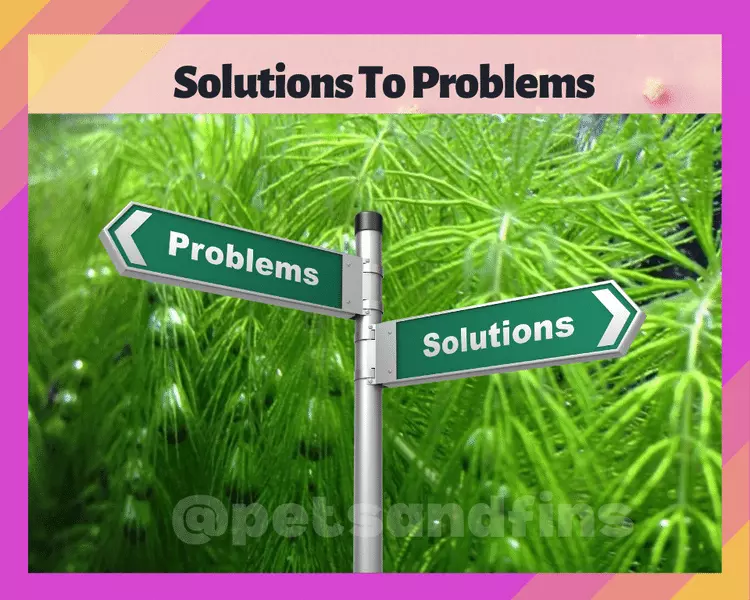
Wrapping Up:
Hornwort is one of the best plants you can have in your aquarium. It is a a simple, undemanding plant to decorate your aquarium. This beautiful aquatic plant is quite easy to care for, and will provide your fish with plenty of places to hide and rest.
The plant provides a great environment for shrimp and fry. Additionally, the plant can be easily propagated through offsets and is perfect for any beginner who’s just getting into the hobby. Just remember to trim it regularly and get set to enjoy a great aquarium!

